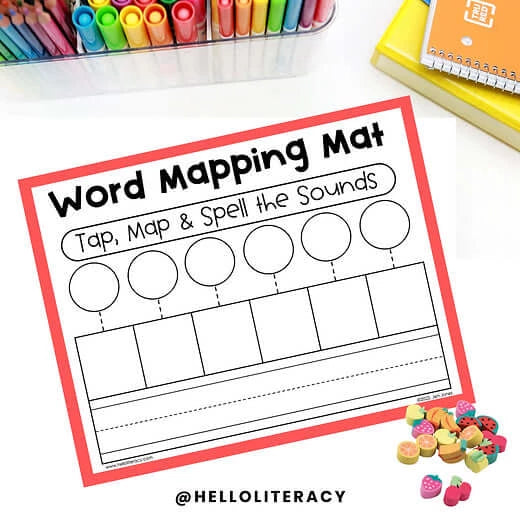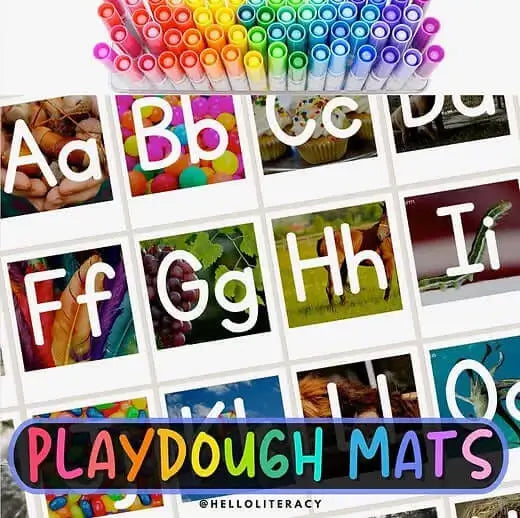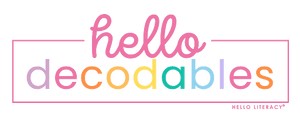
· By Jen Jones
Unlock Free Phonics Lessons: Boost Your Teaching Arsenal
Open up Free Phonics Lessons with ease and help your young learner excel in early reading skills. Phonics, which is essential for reading fluency, links sounds (phonemes) with their spellings (graphemes). Here's a quick list of free phonics lessons resources to get you started: - Hello Decodables Blog - Reading Rockets - Starfall - PBS Kids
Phonics is a cornerstone of reading education, enabling children to decode words easily. By connecting the sounds of spoken English with letters or groups of letters, kids learn to read smoothly and effectively. Research confirms that a strong phonics foundation significantly boosts early literacy.
I'm Jen Jones, an educator with over 30 years of experience. My mission is to provide accessible, research-backed resources for teaching phonics. With my experience, finding free phonics lessons has never been easier or more effective.

Free phonics lessons terms to know: - how to make phonics lessons fun - how to teach a phonics lesson - phonics lesson plan
What Are Phonics and Why Are They Essential?
Phonics is the method of teaching reading by correlating sounds with symbols in an alphabetic writing system. It focuses on the relationship between sounds (phonemes) and their spellings (graphemes).
Phonemes and Graphemes
Phonemes are the smallest units of sound in a language. For example, the word "cat" has three phonemes: /k/, /æ/, and /t/. Graphemes are the letters or groups of letters that represent these sounds. Understanding this relationship is crucial for decoding new words.
Reading Fluency
Phonics plays a vital role in achieving reading fluency. When children can quickly associate sounds with letters, they can read more smoothly and accurately. This fluency is essential for comprehension and overall literacy development.
Research shows that strong phonics skills can significantly improve early reading success. According to the National Reading Panel Report (2000), systematic phonics instruction is more effective than non-systematic or no phonics instruction.
By integrating phonics into your teaching, you help children build a solid foundation for reading. This foundation is essential for their academic success and lifelong learning.

How to Access Free Phonics Lessons
Accessing free phonics lessons is easier than ever, thanks to a variety of online platforms, downloadable PDFs, apps, and interactive games. Here’s a comprehensive guide to get you started:
Online Platforms
- Hello Decodables: This platform offers a vibrant mix of words, sounds, images, practice, and play. It aligns with the Common Core K-5 Reading Standards and covers the 42 essential phonemes for reading fluency. Each lesson features sound cards to illustrate the relationship between letters and pictures, making it ideal for both classroom and home use.
Downloadable PDFs
- Hello Decodables: Explore our extensive library of downloadable phonics materials, including worksheets, lesson plans, and interactive activities. These resources are perfect for supplementing your existing curriculum or creating a new one from scratch.
Phonics Apps for Interactive Learning
- Hello Decodables App: Our app is designed to teach children how to read through fun, interactive lessons. It covers phonics basics and gradually introduces more complex concepts, making learning to read an enjoyable experience.
Interactive Games
- Hello Decodables Games: Our website offers a range of interactive phonics games that teach letter sounds and beginning reading. The activities are designed to be both educational and entertaining, making it easier for children to grasp phonics concepts.
Homeschool Phonics Curriculum
- Hello Decodables Homeschool Curriculum: We offer a comprehensive list of free phonics resources, including complete curriculums and supplementary materials. It’s a valuable resource for parents and educators looking to build a solid phonics program.
Best Practices for Teaching Phonics
Teaching phonics can feel overwhelming, but breaking it down into manageable steps can make the process smoother. Here are some best practices to guide you:
Start Simple
Begin with the basics. Introduce your child to the individual sounds of letters, known as phonemes. Use simple, everyday objects to make learning relatable. For example, show them a picture of a cat and emphasize the /k/ sound at the beginning.
Tip: Use interactive games that teach letter sounds and beginning reading. It's fun and engaging, making it easier for kids to grasp the basics.
Blending
Once your child is comfortable with individual sounds, move on to blending. This involves combining individual sounds to form words. For instance, take the sounds /c/ /a/ /t/ and blend them to say "cat."
Activity Idea: Use magnetic letters to create simple words. Ask your child to blend the sounds together. This hands-on approach can make learning more interactive.
Complex Combinations
After mastering blending, introduce more complex phonics rules, such as consonant blends and digraphs. These are combinations of two or more consonants that make a single sound, like "sh" in "ship" or "bl" in "blue."
Resource: Hello Decodables offers free books and worksheets that gradually introduce these more complex combinations, helping children build on their existing knowledge.
Vowel Combinations
Vowel combinations can be tricky but are essential for reading fluency. Teach your child about long and short vowel sounds and how different combinations of vowels can create different sounds, such as "ai" in "rain" or "ea" in "beach."
Example: The Hello Decodables series includes books like "Sail Away," which focus on specific vowel combinations. This targeted practice helps reinforce new skills while incorporating previously learned ones.
Illustration:

By following these best practices, you can create a structured and effective phonics program. Start simple, build on those basics, and gradually introduce more complex concepts to help your child become a confident reader.
Next, let's explore some comprehensive resources that can support your phonics teaching journey...
Comprehensive Guide to Free Phonics Resources
Free Online Phonics Lessons
Hello Decodables Hello Decodables offers a free online reading program designed for children in kindergarten and up. The platform combines words, sounds, images, practice, and play to teach phonics. Each lesson focuses on different consonant and vowel phonemes, using sound cards to show the relationship between letters and pictures. Free worksheets and online activities are available to review skills before moving on to the next lesson. This is a great resource for both parents and teachers.
Downloadable Phonics Materials
Hello Decodables Hello Decodables provides a phonics curriculum that can be used with kindergarten or first graders who are just beginning to read or with older students who need to improve their literacy skills. The program includes detailed online lesson plans and several downloadable components, such as letter cards, word cards, and reading passages.
Phonics Apps for Interactive Learning
Hello Decodables App Hello Decodables App is available for devices that offer a comprehensive phonics curriculum for children in Pre-K to 2nd grade. The app uses a game-like format to teach phonics, sight words, reading comprehension, vocabulary, and more.
Homeschool Phonics Curriculum
Hello Decodables Homeschool Curriculum Hello Decodables provides a list of free homeschool phonics curriculums for every grade. The resources are listed in alphabetical order with suggested grade ranges. The site includes both secular and Christian resources, clearly labeled for easy selection.
Frequently Asked Questions about Free Phonics Lessons
How Can I Teach Phonics for Free?
Teaching phonics for free is easier than you might think. There are several high-quality resources available that won't cost you a dime.
Community Reading Project
The Community Reading Project offers tools designed to help older students, especially those with dyslexia, improve their reading skills. This resource includes online lessons covering blending, phonics, spelling, grammar, fluency, and comprehension. It's a great option for students from 3rd to 12th grade.
FreeReading
FreeReading provides a detailed phonics curriculum suitable for kindergarten or first graders. It includes 40 weeks of online lesson plans and downloadable components like letter cards, word cards, and reading passages. This structured approach can be an excellent guide for parents and teachers.
What is the Best Phonics Program?
Several phonics programs stand out for their effectiveness and ease of use. Here are some popular ones:
Hello Decodables
Hello Decodables offers a comprehensive set of phonics resources, including books, games, and flashcards. Their materials are highly regarded and can be a valuable addition to your teaching toolkit.
Jolly Phonics
Jolly Phonics is a well-known program that uses a multi-sensory approach to teach the 42 main sounds of English. The program includes songs, actions, and stories to make learning phonics fun and engaging.
Letterland
Letterland turns phonics lessons into a story-based trip. Each letter has a character and a story, helping children remember sounds and spellings. This program is especially effective for young learners who enjoy imaginative play.
Does Khan Academy Kids Teach Phonics?
Yes, Khan Academy Kids offers a comprehensive, free app that includes interactive phonics lessons. The app uses engaging activities and games to teach phonics, making it a fun learning experience for children. It's available for both iOS and Android devices.
Khan Academy Kids covers a wide range of phonics activities, from basic letter recognition to more complex phonics skills. The app is designed to be intuitive and child-friendly, ensuring that kids stay engaged while learning.
By leveraging these free phonics resources, you can improve your teaching arsenal and provide a comprehensive learning experience for your students. Whether you're looking for online lessons, downloadable materials, interactive apps, or homeschool curriculums, these resources have you covered.
Conclusion
Phonics is the foundation of reading fluency and comprehension. By understanding the relationship between sounds and their spellings, children can open up reading. The benefits of phonics are vast—improved reading skills, better spelling, and improved comprehension. These skills are essential for academic success and lifelong learning.
Hello Decodables
At Hello Decodables, we believe every child deserves the best opportunity to learn to read. Our free phonics resources are designed to support teachers, parents, and students in their phonics journey. From decodable books to structured literacy routines, we provide tools that make learning phonics engaging and effective.
Continuous Learning
Learning doesn’t stop with phonics. As students master phonics skills, they can move on to more complex reading and writing tasks. Continuous practice and exposure to new texts are crucial. With resources like Hello Decodables, you can ensure that your students are always challenged and motivated to learn more.
Incorporate these free phonics lessons into your teaching arsenal today and watch your students thrive. The journey to reading fluency starts with a single step—equip yourself with the best tools and make that step count.
